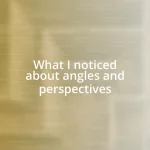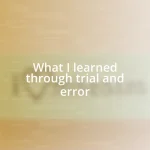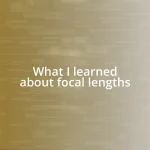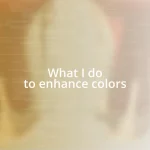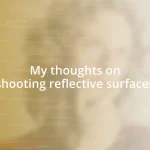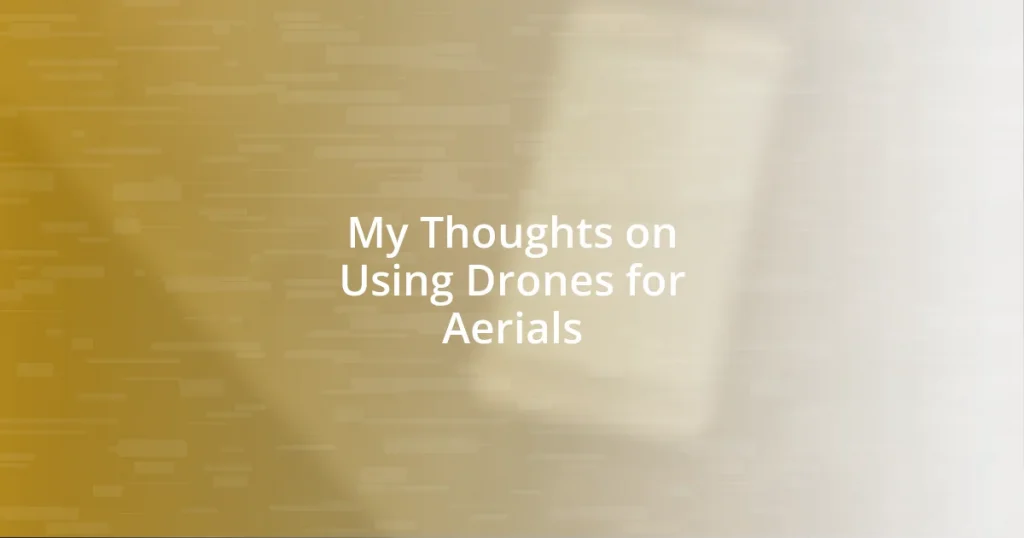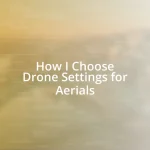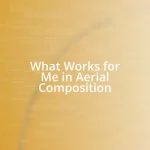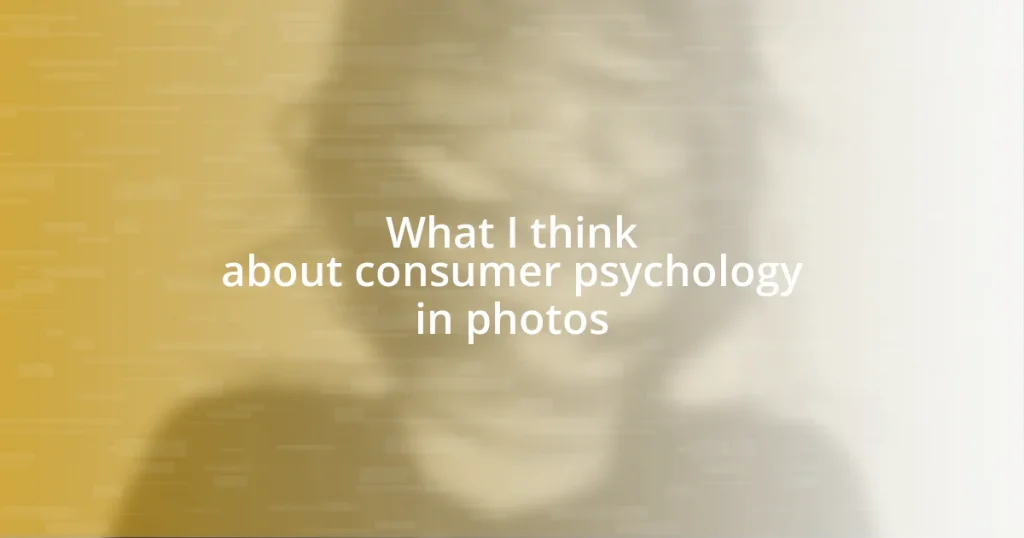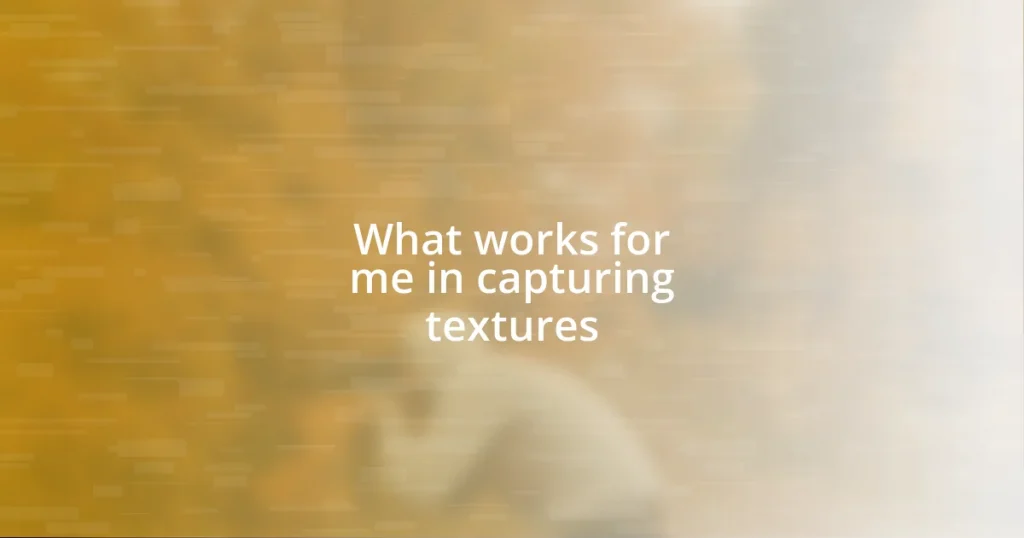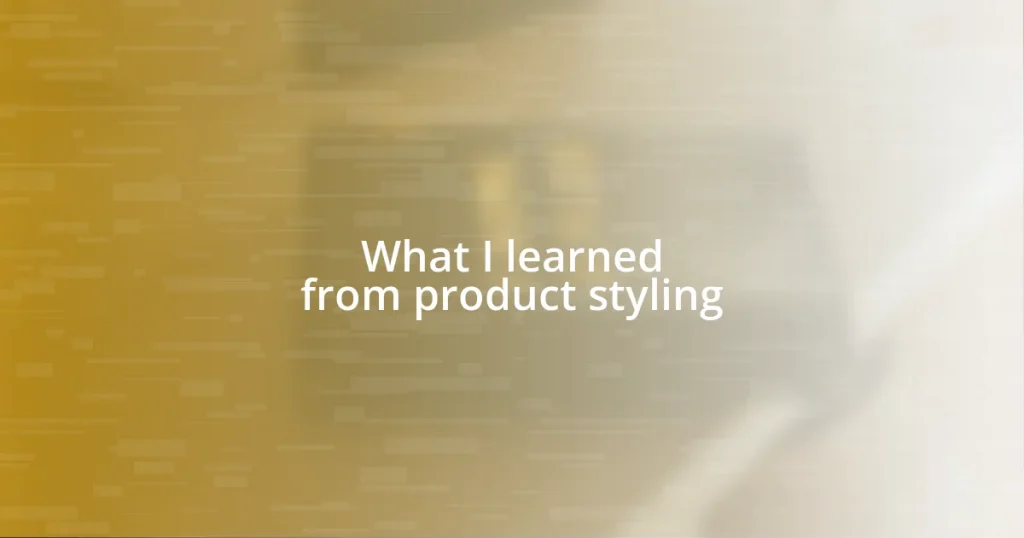Key takeaways:
- Aerial drones offer versatility and efficiency across various fields, transforming tasks like photography and data collection.
- Essential features for drones include battery life, camera quality, GPS functionality, and safety systems like obstacle avoidance.
- Understanding legal regulations and respecting privacy laws is crucial for responsible drone operation and avoiding potential legal issues.

Introduction to Aerial Drones
Aerial drones have truly revolutionized the way we capture images from above. I still remember the first time I witnessed a drone soaring over a beautiful landscape, effortlessly gliding and revealing perspectives I’d never seen before. It sparked a thrill that made me realize just how much potential these machines hold for both creativity and utility.
What really excites me is the versatility of drones in various fields. From filmmaking to agriculture, I’ve seen firsthand how these flying devices can transform tasks that once seemed cumbersome. Can you imagine capturing a breathtaking sunset over the ocean without the need for a helicopter? That’s the magic of drones—they democratize aerial photography and make it accessible to anyone with a passion for discovery.
Moreover, the technology behind these aerial wonders is constantly evolving. I often find myself amazed at the advancements in drone capabilities, such as improved stability, higher resolution cameras, and even obstacle avoidance systems. Isn’t it fascinating to think about how these innovations are setting the stage for a future where aerial imaging becomes an integral part of our everyday lives? The possibilities are truly endless.

Benefits of Using Drones
Using drones opens up a world of benefits that I find not only fascinating but incredibly practical. For instance, they can cover vast areas in a fraction of the time it would take using traditional methods. I can recall a project I worked on where we needed to survey an expansive agricultural field. Using a drone, we gathered crucial data in just a couple of hours, saving days of labor while providing insights that made a real difference for the farmer.
Another significant benefit is the high-quality imagery that drones capture, which I’ve personally experienced during various events and projects. The detail and perspective are simply unmatched. When shooting a wedding, for example, I was thrilled to capture sweeping aerial views that added a whole new dimension to the couple’s special day. That kind of unique perspective is something clients cherish.
Additionally, drones have a positive environmental impact. Unlike traditional helicopters, they’re quieter and use less fuel. I remember a time we used a drone for documenting a wildlife area. The reduced noise levels kept the animals undisturbed, allowing for more authentic footage. It’s these little things that make me appreciate the broader implications of how we use technology in a mindful way.
| Benefit | Explanation |
|---|---|
| Efficiency | Drones can cover large areas quickly, saving time and labor costs. |
| High-Quality Imagery | They capture detailed and expansive views, enhancing visual storytelling. |
| Environmental Impact | Drones operate quietly and use less fuel compared to traditional aerial methods. |

Essential Drone Features
When exploring essential drone features, there are a few key aspects that I cannot emphasize enough. Having flown various models, I’ve learned that battery life is absolutely crucial; nothing can derail a shoot faster than a drone running out of juice mid-flight. Another feature that has made my life easier is GPS functionality, which ensures precise navigation and helps with tracking shots.
- Battery Life: Longer flight times allow for extended shooting without interruptions.
- Camera Quality: High-resolution cameras are vital for capturing stunning imagery.
- GPS Functionality: Provides accurate positioning and tracking for easier maneuverability.
- Obstacle Avoidance: Enhances safety by preventing crashes and collisions while flying.
- Range: A good control range means I can capture footage from various distances and angles.
On a personal note, I still recall the excitement of using a drone with obstacle avoidance features for the first time. It was a game changer. I was illuminating a festival from above, and I could focus on capturing those artistic angles without worrying about trees or rooftops. That sense of freedom and creativity is exhilarating, and having these essential features allows me to push the boundaries of my work. Trust me, investing in these aspects can transform your aerial experience in ways you might not initially consider!

Choosing the Right Drone
Choosing the right drone is like selecting the perfect tool for the job, and there are a few things I keep in mind from my experiences. For example, when I was deciding on a drone for landscape photography, I focused heavily on camera quality. I remember the first time I captured the sunrise over a vast valley; the crisp, vibrant colors made the early morning shoot truly rewarding. It taught me that investing in a high-resolution camera can elevate your work tremendously.
Another crucial factor to consider is the drone’s weight and portability. I recall dragging my old, bulky drone to a remote location and realizing how exhausting it was to carry. At that moment, I promised myself that any future purchase would be lightweight and easy to transport. The convenience of a compact design can’t be overstated, especially for those of us who love exploring off the beaten path. How often have you wished for a drone that complements your adventurous spirit without weighing you down?
Lastly, think about the drone’s software capabilities. I once utilized a drone that offered advanced editing features right in the app, which allowed me to do quick edits while still on-site during a festival. That real-time creativity exhilarated me, as I could share sneak peeks with clients instantly! Having smart software can dramatically enhance your workflow, so I urge you to explore these options thoroughly before making your decision. Choosing the right drone should simply be about enhancing your creative process, not complicating it!

Techniques for Aerial Photography
Capturing stunning aerial shots involves a variety of techniques. One approach I often use is to fly during the golden hour—shortly after sunrise or before sunset. The magical lighting during these times creates natural warmth, and I’ve noticed it dramatically enhances the mood of my images. Remember that timing can make all the difference in photography; have you considered how the light changes at different times of day?
Another technique I employ is experimenting with different altitudes. By varying my height, I uncover unique perspectives that I might have missed otherwise. I remember one particular shoot where I hovered just above a cliff’s edge, offering a breathtaking view that showcased both the rugged terrain and the sweeping ocean. It was exhilarating to discover a composition I hadn’t anticipated simply because I adjusted my altitude.
I also find that using camera settings effectively can elevate my aerial photography. For instance, I often shoot in manual mode to maintain full control over my exposure and ISO settings. There was one memorable instance when I shot a vibrant cityscape at dusk; adjusting my settings allowed me to capture the twinkling lights against the darkening sky, creating an evocative contrast. It’s this level of control that helps in nailing that perfect shot; aren’t you curious about how much your settings can impact your final images?

Editing Aerial Footage
Editing aerial footage can be quite an exhilarating experience for me. I remember my first time sitting down with a new batch of drone shots after a weekend trip. The joy of piecing together sweeping landscape views, dynamic angles, and surprising close-ups was almost like assembling a jigsaw puzzle where every piece had a story to tell. The editing software became my canvas, and I could let my creativity flow as I adjusted colors and transitions to evoke the emotions I felt during those flights.
One tip I’ve picked up over the years is to use color grading to enhance the overall mood of the footage. There’s something transformative about adding warmth or coolness to shots that can shift how the viewer feels. I once had a video shoot in the snow-capped mountains, and applying a cool blue tone not only elevated the visual aesthetics but also captured the chilling beauty of the environment. Have you ever tried to adjust colors thoughtfully in your edits to match the narrative you’re conveying?
Lastly, it’s crucial to maintain a good flow within the footage. I learned this the hard way during an ambitious project where my excitement led to rapid-fire cuts that left my audience dizzy. Taking the time to create smooth transitions allows viewers to relish the beauty of each aerial shot, creating a captivating story rather than just a collection of clips. Finding that balance between pacing and visual impact can turn your footage into a breathtaking journey; haven’t you ever watched something that felt like a natural experience rather than a disjointed sequence?

Legal Considerations for Drone Use
When it comes to drone use, understanding legal considerations is crucial. I remember the first time I flew my drone in a public space; I felt a mix of excitement and nervousness. It was only after researching local regulations that I realized how important it was to understand airspace restrictions and avoid no-fly zones, especially around airports and sensitive locations. Are you aware of your area’s regulations?
Additionally, I’ve learned that acquiring the right permits can save you from unwanted fines or legal issues. For instance, I had a shoot planned in a national park, and I was surprised to discover that I needed a special permit just to operate my drone there. This experience taught me the value of planning ahead and ensuring that you have all the required documentation. Have you considered the potential consequences of flying without the proper authorization?
It’s also worth noting that respecting privacy laws is paramount. I clearly recall a situation where I accidentally captured footage of someone’s backyard during a flight. That moment was an eye-opener for me; I realized that drone operators must be mindful of people’s privacy, as infringing on it can lead to not only discomfort but also legal ramifications. How comfortable would you feel if your private moments were shared without your consent?



